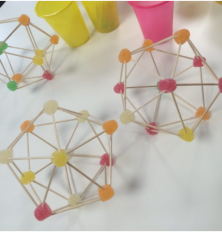In today’s post we’re going to take a look at manipulative mathematics and learn how to construct an icosahedron with something as sweet and appetizing as gummies. Do you want to try it? It’s very simple, and a lot of fun!
Manipulating materials can be really useful for learning abstract mathematical concepts, and it is undoubtedly necessary to learn a concept as visual as geometry.
So, what is an icosahedron? It’s a polyhedron (a geometrical body whose faces are all flat) usually made up of 20 equilateral triangles. It’s one of the 5 platonic solids.
How to construct an Icosahedron
Now you know a bit more about the icosahedron, we’re going to start constructing it. Follow this step-by-step guide to make your very own:
- You will need 12 gummies and 30 toothpicks. We prepared a few pots containing the things we needed to make 5 icosahedra:
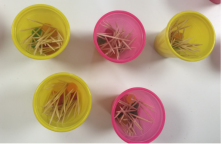
- Make a regular pentagon using 5 gummies and 5 toothpicks:
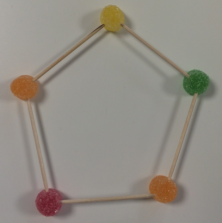
- Using the pentagon as a base, make a pentagonal pyramid:
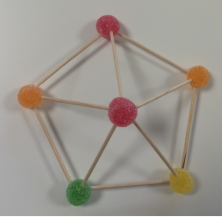
- Add a triangle to each side of the original pentagon (using each side of the pentagon as one side of each triangle):
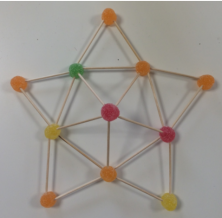
- Hold the figure that you’ve constructed so far by the top point of the pentagonal pyramid and let the triangles you’ve just made drop down:
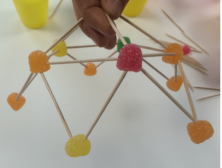
- You’ve almost finished! Now join the corners of the triangles that are left “free” to each other (join each corner to the corner of the triangle next to it):
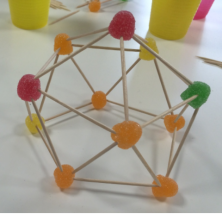
- Finally you just have to make the pentagonal pyramid to close the icosahedron, using the 5 toothpicks and one gummy you have left:
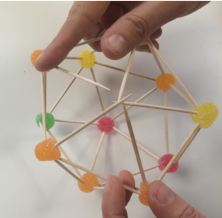
Have you done it? I hope it turned out as pretty as these ones!:
Investigate your icosahedron
Now you’ve constructed your icosahedron, you can observe it carefully and answer the following questions:
- How many corners does it have?
- How many edges?
- What shape do the faces make?
- How many faces?
- Do you notice any three-dimensional figure that is constantly repeated? Or a flat figure that repeats?
You can make these things out easily, because the gummies make the corners, and the toothpicks make the edges. If you follow the urge to investigate, leave your conclusions in the comments!
If you liked this post, share it with your friends so they too can make an icosahedron like yours.
You can also practice more manipulative mathematics by figuring out what other geometric figures you can make with toothpicks and gummies.
If you want to learn more primary mathematics, register with Smartick and try it for free.
Learn More:
- Curiosities of Some Geometric Figures
- Learn Everything About Triangles: Characteristics, Types and Classification
- How to Calculate Perimeters: Part 1
- What Are Solid Geometric Shapes or Bodies?
- Geometry and 2D Shapes with the Help of a Tangram



